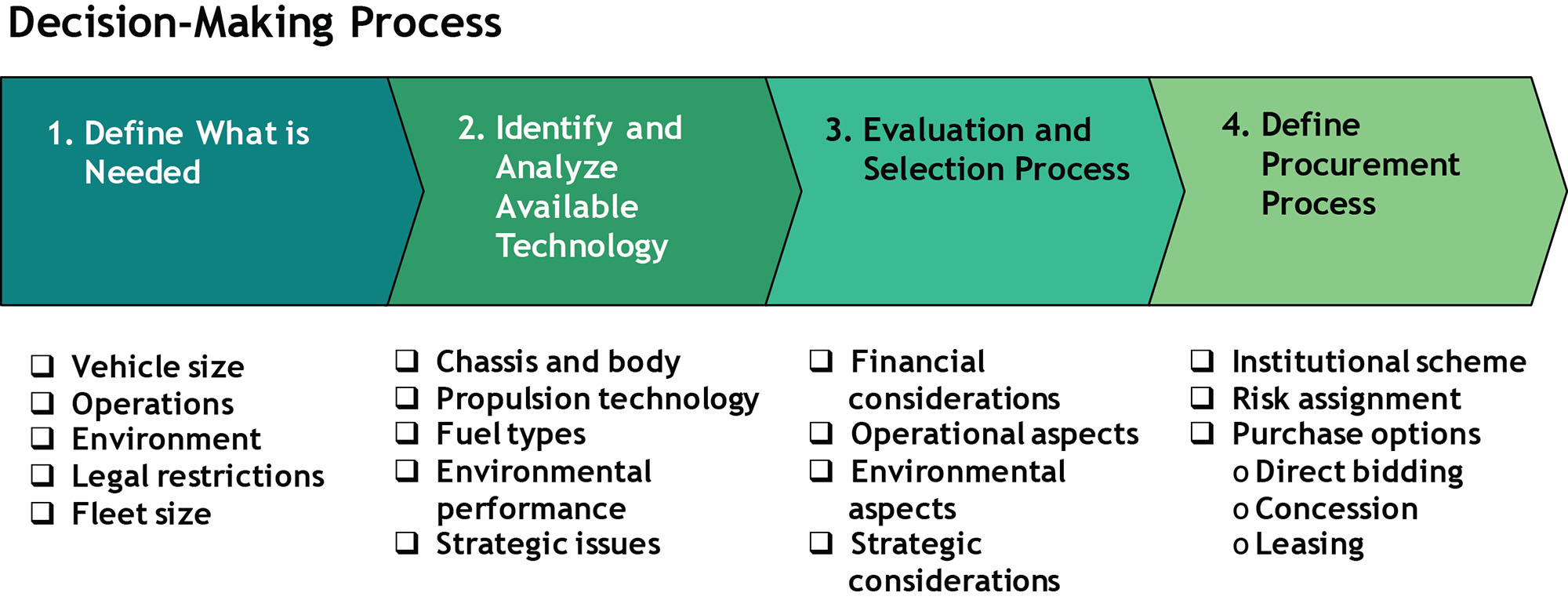20.1Decision-making Matrix
You can’t make decisions based on fear and the possibility of what might happen.Michelle Obama, first lady of the United States, 1964-
Vehicle-fleet technology selection, provision, and operation are complex and depend on legal, operational, institutional, and strategic factors particular to each individual case. Figure 20.2 displays a recommended methodology for vehicle selection and provision mechanisms.

Following through the four main activities described in Figure 20.2 can guarantee that the characteristics of the chosen vehicle will meet all the operational requirements necessary to ensure the system’s financial viability
The first and most important activity involves identifying the project’s specific needs and requirements for its fleet. Most of this analysis should already have been done in the operational-design process, covered in detail in Chapter 4: Demand Analysis and Chapter 8: Traffic-impact Assessment. Vehicle characteristics should not be defined based only on aesthetic or political interests, but must be defined based on optimizing the system’s operations.
It would be a serious mistake to select the vehicle prior to performing the operational analysis. Selecting the vehicle type prior to defining the system’s operational design can result in either purchasing far more expensive vehicles than is necessary or vehicles too small to provide the required capacity without serious overcrowding or busway congestion. Table 20.1 summarizes many of the factors to consider in deciding on a technology and a manufacturer.
Table 20.1Decision Factors for Choosing a Vehicle Technology
| Category | Factor |
|---|---|
| Cost |
|
| Vehicle features |
|
| Manufacturer support |
|
| Robustness |
|
| Re-fueling |
|
| Safety |
|
| Environment |
|
| Compliance with local regulations |
|
Once the principal system requirements and needs have been identified, there remain many additional technical considerations that need to be decided before finalizing the technical specification. In general, the basic decision areas for the vehicle include:
- Vehicle size;
- Chassis and body configuration;
- Interior design options;
- Fuel and propulsion technology;
- Aesthetic options;
- Vehicle docking options.